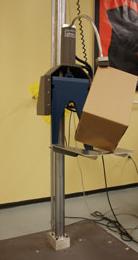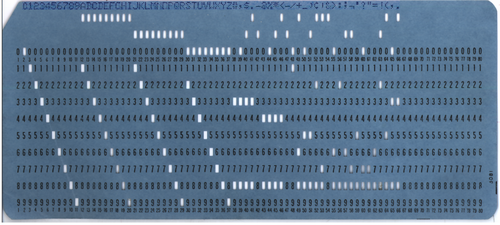Recognizing the Various Kinds Of Pre-owned Boxes
When it concerns finding ways to save cash, many people do not usually consider used boxes. Second Hand Boxes Sydney. Nevertheless, these commonly neglected things can offer a riches of savings, especially when youre moving, saving, or perhaps delivering products. Comprehending the different kinds of second-hand boxes readily available can aid you make the most of your spending plan.
One of the most typical types of second-hand boxes is the typical moving box. These boxes are commonly made from cardboard and come in a range of sizes. They are best for packing home products for a relocation. They are likewise preferred for storage objectives. When bought brand-new, these boxes can be quite costly, yet by selecting second-hand, you can save a significant quantity of money.
Another kind of used box that can supply significant cost savings is the shipping box. These boxes are generally tougher and created to safeguard their contents during transport. Several on the internet vendors or businesses that frequently deliver goods pick to reuse these boxes to decrease costs.
After that there are data boxes, which are typically used for storing papers and documents. These boxes are normally smaller and a lot more portable, providing an organised method to keep crucial papers. They can be pretty expensive when gotten brand-new, specifically the ones with extra attributes like locks or slots for tags. Nonetheless, numerous offices often have surplus of these boxes and market them second-hand at a fraction of the initial price.
Closet boxes are an additional kind that can be bought used. These high boxes included a bar for hanging clothing, making them ideal for moving wardrobes. They are usually more pricey than various other kinds of boxes as a result of their dimension and specialized layout, yet you can conserve a fair bit if you can discover them used.
Last but not least, there are specialty boxes designed for particular things like mirrors, art work, or televisions. These boxes normally feature extra cushioning or reinforcements to shield breakable or valuable things. As a result of their specialized nature, they often tend to be a lot more pricey. Nonetheless, buying them second-hand can aid you conserve money while still ensuring your items are well shielded.

To conclude, recognizing the different kinds of second-hand boxes can help you choose the right box for your needs and conserve money at the same time. Whether youre moving, storing, or shipping items, theres likely a second-hand box thats excellent for the work. By opting for second-hand boxes, youre not just conserving your budget, however youre additionally adding to the setting by lowering waste.
Tips for Searching For Top Quality Used Boxes
When embarking on a trip to save cash with used boxes, it is crucial to make certain that you are investing in high quality boxes that will certainly serve their function successfully. This essay will supply you with detailed ideas on exactly how to find top quality pre-owned boxes.
To start with, it is necessary to recognize the ideal areas to resource your second-hand boxes. Visit neighborhood retail stores, supermarkets, and warehouses.
The Best Second Hand Box Deals in Los Angeles: A Locals Guide - paperboard
- Corrugated fiberboard
- packaging
- Paper bag
Once you have identified possible resources, check packages very carefully prior to getting them. Look for any kind of signs of damage such as dents, splits, or water damage. Ensure that they are tough and capable of holding weight without falling down.

Size is one more important element to consider when seeking second-hand boxes. You wish to ensure that packages you choose appropriate for the things you plan to load. As an example, books and heavy things must be crammed in smaller boxes while lighter items can enter into bigger boxes.
Keep away from boxes that have actually been utilized to store food products. These boxes may bring in insects or might have recurring smells. Similarly, boxes that have been used to transport chemicals or harmful materials ought to be stayed clear of as they could present health and wellness threats.
When analyzing the top quality of the pre-owned boxes, pay attention to the type of cardboard utilized. Double-walled or corrugated boxes are ideal for their toughness and toughness.
Keep in mind to think about the cleanliness of the boxes. Although you are acquiring them used, they should still be clean and presentable. Unclean or stained boxes can be a sign of forget and might jeopardize the quality of the items you intend to keep or transport.
Lastly, request for the boxs background. Understanding what package was previously utilized for can provide important insight into its longevity and viability for your needs.

In summation, saving cash with pre-owned boxes does not imply compromising on top quality. By complying with these pointers, you can find pre-owned boxes that are not only cost-efficient yet also reliable and reliable. Keep in mind to be client and thorough in your search; the excellent boxes are around awaiting you.
Exactly how to Clean and Shop Second-hand Boxes for Future Usage
Second-hand boxes are a fantastic way to conserve cash, especially when youre moving, storing things, and even delivering parcels. Not only do they decrease your effect on the environment, however they likewise aid you prevent unneeded expenses. Nevertheless, its necessary to tidy and shop these boxes correctly to ensure their durability and future use. Heres a detailed guide on how to do that.
To start with, prior to you can reuse a used box, you require to cleanse it.
The Best Second Hand Box Deals in Los Angeles: A Locals Guide - packaging
- Cardboard
- Paperboard
- corrugated fiberboard
The Best Second Hand Box Deals in Los Angeles: A Locals Guide - paperboard
- The Adventure of the Cardboard Box
- liquid packaging board
- Cardboard (disambiguation)
As soon as packages are clean and completely dry, its time to store them. Ideally, dismantle packages to save room. As you take apart, beware not to tear or harm the boxes. Shop the flattened boxes in a completely dry, amazing location far from straight sunlight. Piling packages flat can aid protect against any one box from bearing excessive weight and obtaining crushed.
Shield packages from wetness as it can create the cardboard to end up being weak and musty. If you stay in a damp climate, consider keeping packages off the floor or placing silica gel packets or dehumidifiers in the storage area.
In addition, try to classify and identify packages based upon their size or planned use. This can make it simpler for you to find the right box when you require it.
Effectively cleaning and keeping second-hand boxes can dramatically boost their life expectancy, enabling you to recycle them multiple times. By doing so, you are not just saving money however additionally participating in an eco-friendly technique that minimizes waste and assists the setting.
Finally, second-hand boxes are a valuable source that ought to not be undervalued. With the right treatment and storage, they can supply an affordable, sustainable solution for your storage needs. So next time you stumble upon pre-owned boxes, don't discard them. Rather, tidy and save them properly for future usage. Youll be surprised at how much you can conserve in the long
Legal and Ecological Ramifications of Making Use Of Used Boxes
Making use of used boxes as a way of conserving cash is a style that has actually gained significant grip over the last few years. This method is not only affordable yet also lines up with the expanding international focus on sustainability. Nonetheless, it also includes its legal and environmental implications, which prospective users should certainly recognize.
Starting with the lawful implications, it is necessary to keep in mind that the use of pre-owned boxes isn't a free-for-all. There are legal limits made to secure both the previous and future customers of these boxes. For instance, boxes formerly utilized for transferring hazardous materials might position a threat to brand-new individuals if not properly dealt with and stated secure. As such, it is prohibited to market or reuse such boxes without undergoing the needed safety and security treatments. In addition, boxes with copyrighted or trademarked logos and styles should not be reused without specific approval from the civil liberties owners. Doing so might potentially bring about legal issues bordering intellectual property rights.
In terms of environmental implications, recycling pre-owned boxes is typically viewed as useful. It decreases the demand for brand-new boxes, thus lowering the number of trees lowered to make these items. This straightens perfectly with the global requirement for lasting methods and plans. However, its not all glowing. As an example, the process of cleansing and dealing with these boxes for reuse could possibly have its own ecological effect. Making use of harsh chemicals, as an example, might bring about water and soil pollution otherwise effectively managed.
Furthermore, the transport of these boxes from one area to another can bring about a surge in carbon emissions, especially if the ranges involved are considerable. This is an ecological ramification that can not be forgotten.
To conclude, using pre-owned boxes as a cost-saving step is a terrific concept with its mix of financial and environmental benefits. Nevertheless, users must continue to be observant of the legal and ecological implications involved. Possible customers must ensure they comply with all lawful guidelines controling their usage and do their part in mitigating any adverse ecological impacts. Certainly, conserving money with used boxes isn't just about the economic elements; its also regarding doing it properly and sustainably.

















![Corner cut carton for beverage cans[19]](http://upload.wikimedia.org/wikipedia/commons/thumb/c/ce/Eco-Products_2010_%285345091717%29.jpg/330px-Eco-Products_2010_%285345091717%29.jpg)

















